Let me be clear: this week’s recipe is not a speedy little number. You can’t knock up a French onion soup for a quick supper. It’s not a fifteen-minute meal, or a roasting tray phenomenon that won’t require your input during its cooking. Just softening onions, despite what a lot of recipes tell you, takes up to twenty minutes in a pan. Caramelizing them — really, truly caramelizing them, bringing out their sweetness and complexity — takes literally hours. French onion soup is a labor of love.
But if I lowball the cooking time, one of two things will happen: you won’t end up with the soup you signed up for, the soup you deserve; or you’ll have to ignore my timings, and never trust me again.
If you are familiar with my columns, you will know that I am a dreadful combination of lazy, impatient and greedy — so something has to be seriously worthwhile if it’s going to take up my time. And I certainly don’t think that hours spent in the kitchen is an indicator of the strength or deliciousness of the product. The proof of the pudding is in the eating, not the time spent slogging away at a stove.
But French onion soup is an outlier: shortcuts simply don’t work here. Less cooking time will result in an insipid flavor. Adding bicarbonate of soda will break down the onions faster, but also means you get onion sludge (about as delicious as it sounds) — and an insipid flavor. Sugar will help the onions caramelize faster, but they don’t need it, and ultimately it will overwhelm the natural sweetness they give up during cooking.
Here, the time you devote to cooking the onions really is directly proportional to the pleasure that will result. But oh, is it worth it! All that stirring and that long cooking time come together to create something so much more than its simple parts.
Because, essentially, there are only two main ingredients at work here: onions and beef stock. So, as well as ensuring that your onions are slowly, slowly brought to life, it makes sense to use good beef stock. I wish I could say I was the sort of person with homemade beef stock, made from old bones, in their freezer, but I’m not. So instead, I use half really good, shop-bought stock, and supplement it with a little stock pot and boiling water. As long as you have some of the good stuff in there, it’s impossible to tell (and substantially cheaper).
Once you’ve passed the first hour, the onions need occasional attention, to stop them sticking. But happily, if the onions do begin to stick, you can quickly fix the situation: the fond — the dark, stickiness on the bottom of the pan — is soluble (and absolutely full of flavor), so just add a splash of water, and scrape at the bottom of the pan until the onions release and the stickiness dissolves.
Now, I’m not saying that French onion soup is simply a vehicle for the cheesy croûtes that sit on top of it, but I probably would look at you askance if you suggested forgoing them. The thought of that long pull of cheese as you lift a spoonful of bread from the soup is enough to make me head to the kitchen and start slicing onions.
Traditionally, you would spoon the soup into individual marmites (pot-bellied bowls, whose shape is reflected in the jar of the spread with the same name), top with bread and cheese and place the whole thing under the grill until golden and gooey. I rather like to do it all in one big bowl, with lots of Gruyère toasts, and take the whole thing to the table. However, if you don’t have heat-safe crockery, this isn’t going to fly, and my current grill is so shallow, you’re lucky to get a normal slice of cheese on toast under there, let alone an enormous pot.
But no matter: you can grill the cheese on toast separately. Just make sure that the underside has a few minutes to sit and soak up the onion broth before you serve. The bread’s irresistible sogginess is at least half the point.
Serves 4
Takes 1 hour
Cooks 4-5 hours
- 2lbs 12oz brown onions (unpeeled weight)
- 2 tbsp plain flour
- 34 fl oz beef stock
- 3½ oz butter
- 3 tbsp red wine vinegar
- 1 French stick, sliced
- 5⅓ oz Gruyère, grated
- Peel the onions, and cut into slivers
- Melt the butter in a large pan, add the onions, and stir until the onions have a good coating of butter. Turn the heat down as low as you possibly can, and leave the onions to cook for an hour
- Once the hour is up, start stirring the onions every fifteen minutes or so. They will begin to color and soften, and sizzle a little. Keep cooking and stirring until they are dark brown. If the onions stick to the pan, just pour in a little water, scraping at the sticky patch until it dissolves. When the onions are ready, they will be a deep brown and very soft, but will still have shape: this will take around three hours in total
- Stir the flour into the onions, and cook it for a couple of minutes until you hear it sizzle
- Add the vinegar and a splash of stock, and stir the flour into the liquid, scraping the bottom of the pan. Pour in the rest of the beef stock, and bring up to a simmer, cooking uncovered for fifteen minutes. Taste for seasoning (a lot will depend on your brand of beef stock), and adjust with salt or more vinegar if needed
- Preheat the grill to medium-high. Toast the slices of bread lightly on both sides. Ladle the hot soup into serving bowls, or one large oven-proof dish, then cover with the toast, and cover the toast with the grated Gruyère. Grill until the cheese bubbles, then serve straight away, being careful of the hot bowls!
This article was originally published in The Spectator’s UK magazine. Subscribe to the World edition here.



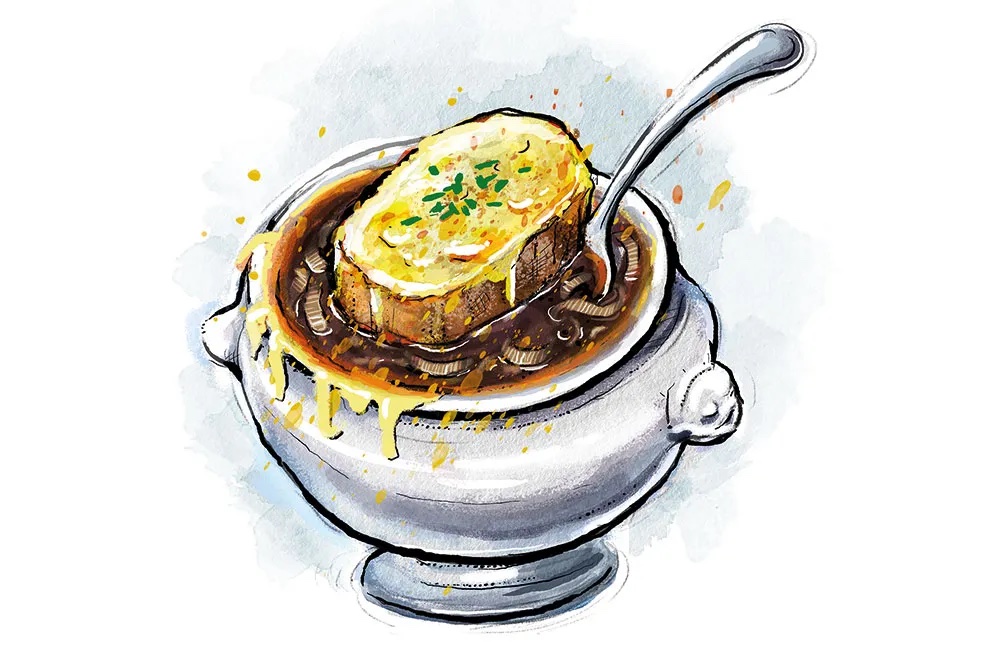








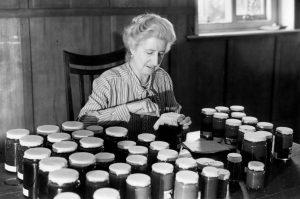


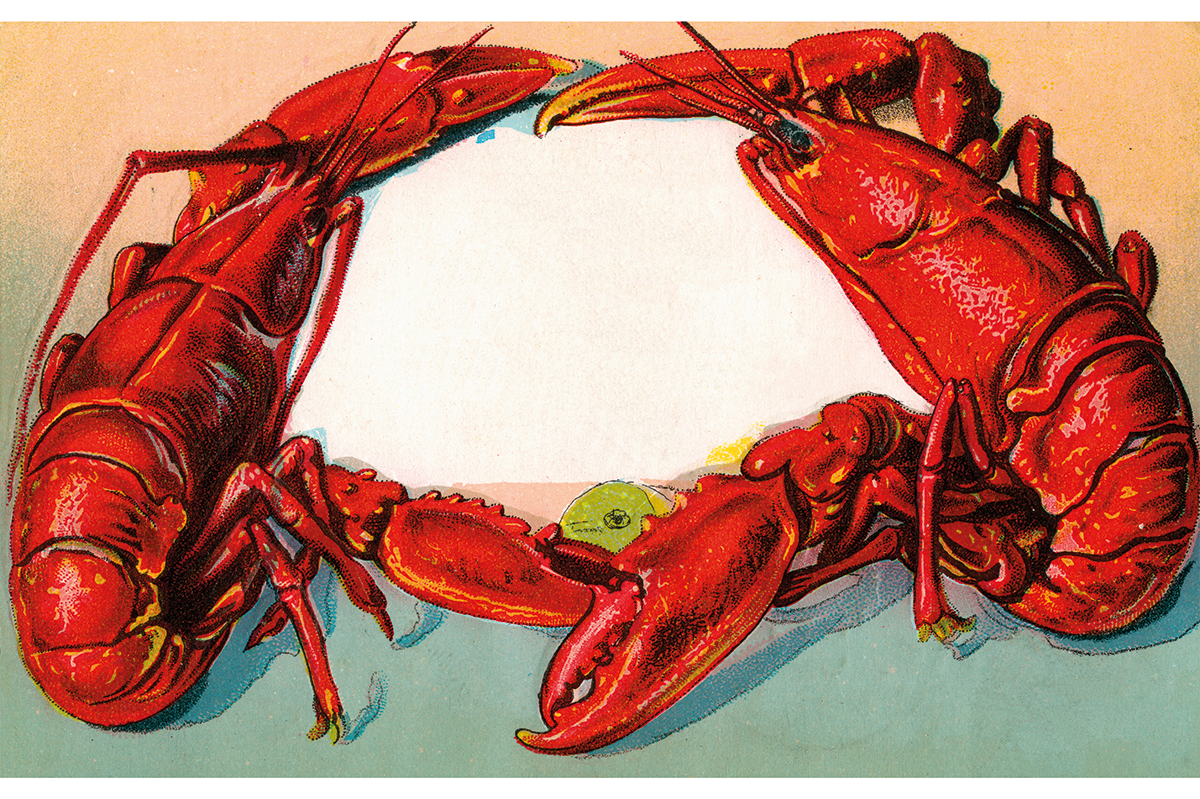
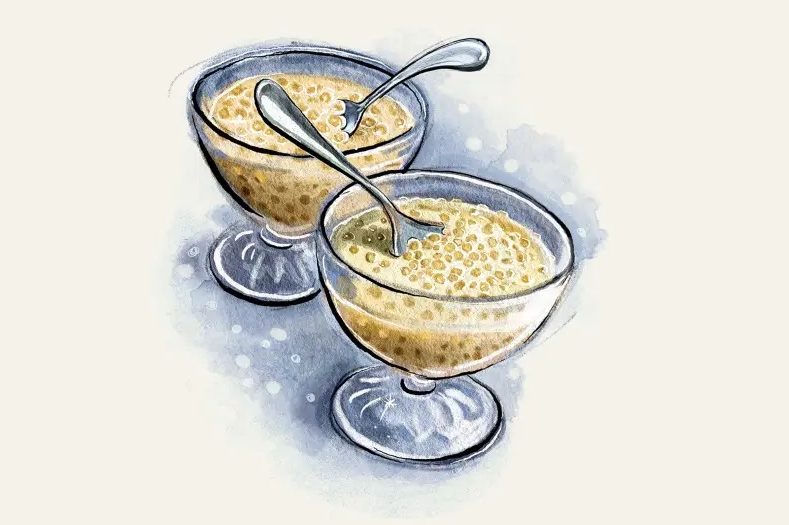
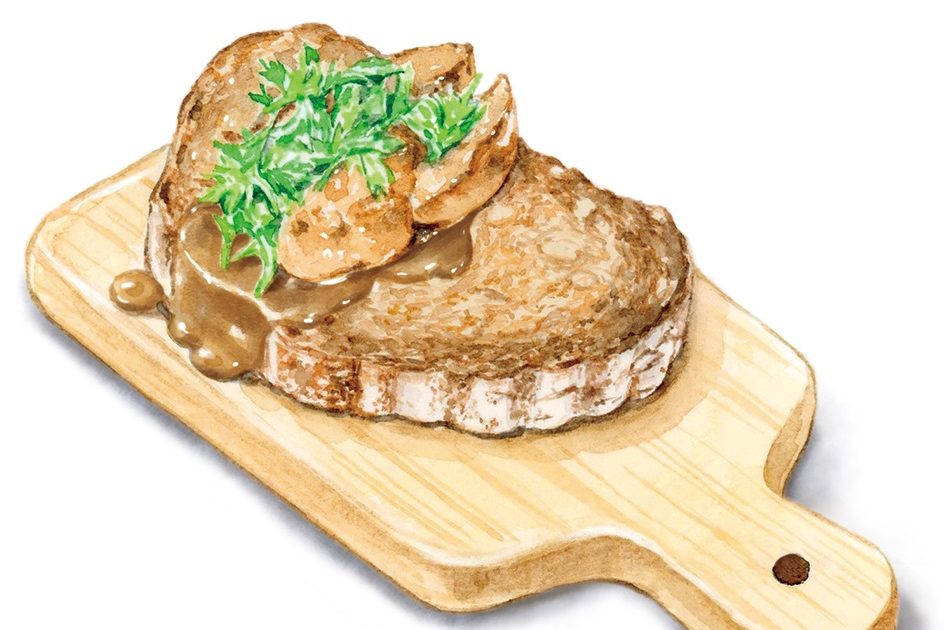








Leave a Reply